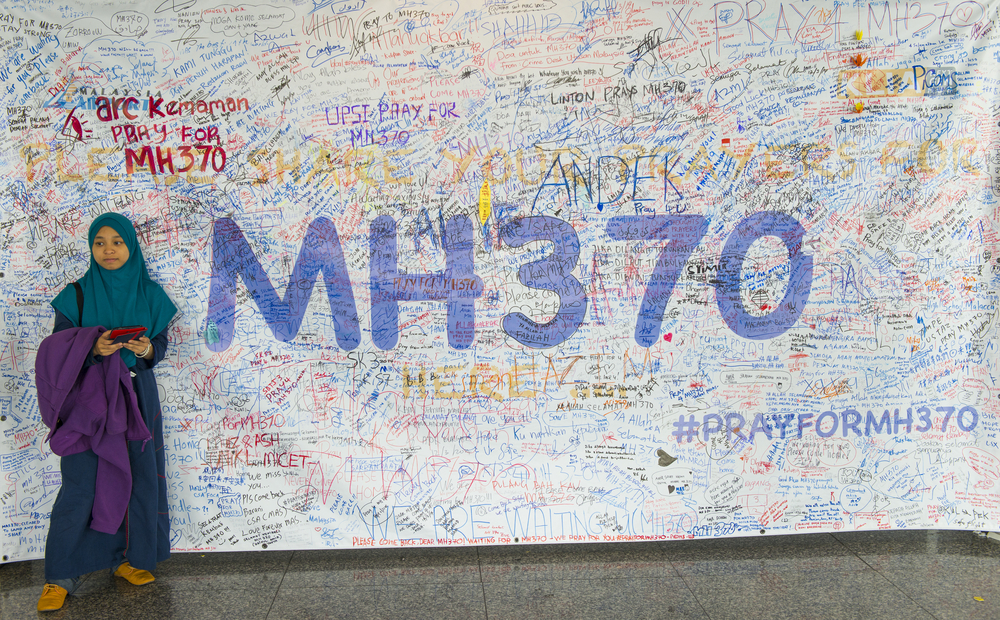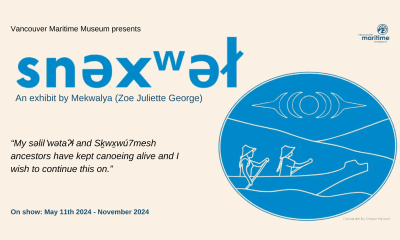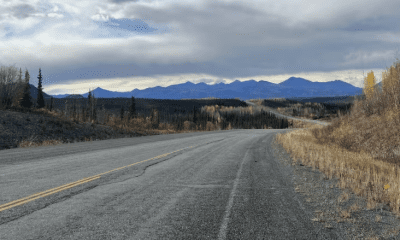Headline
Silver linings in yearlong search for Flight 370: No sign of plane but many useful discoveries

Unidentified Muslim girl poses in front of a banner in support of Malaysia Airlines Boeing 777-200ER MH370 on March 17, 2014 in KLIA, Sepang, Malaysia. AHMAD FAIZAL YAHYA / Shutterstock
WELLINGTON, New Zealand—The yearlong search for Malaysia Airlines Flight 370 has turned up no sign of the plane, but that doesn’t mean it’s been unproductive. It has yielded lessons and discoveries that could benefit millions, including coastal Australians, air and sea travellers and scientists trying to understand ancient changes to the earth’s crust.
The knowledge gained so far is of little comfort to family and friends of the 239 people still missing from the plane, which vanished last March 8 during a flight from Kuala Lumpur, Malaysia, to Beijing. While finding the plane remains the top priority for searchers and investigators, what they’re learning along the way may prove valuable long after the search ends.
Benefits of the work so far include:
New underwater maps
In the Indian Ocean west of Australia, where experts believe the plane crashed, scientists have been mapping the sea floor to aid in the search for wreckage.
Previous maps relied on satellite data, which gave only rough estimates of the ocean’s depth. Now, using sonar readings from ships, scientists have mapped an area the size of Nebraska and have discovered previously unknown trenches and underwater mountains that rival the height of any on Australia’s surface.
Searchers are getting even more detailed sonar readings using small underwater vehicles called “towfish” that are towed just above the sea floor.
Scientists from around the world are eagerly anticipating the release of the three-dimensional maps and data once the search is completed.
Better tsunami prediction
Stuart Minchin, a divisional chief at Geoscience Australia, said that when the maps are released and further analyzed, they will give scientists a better understanding of areas that during earthquakes are susceptible to underwater landslides, which can create or exacerbate tsunamis.
He said the information will help scientists pinpoint areas along Australia’s west coast that are particularly vulnerable to tsunamis and enable better warnings and predictions for coastal residents.
Improved search and rescue
Knowing the topography of the ocean floor also helps scientists predict ocean currents, said Minchin. That can help with everything from predicting where a disabled boat might drift in a search-and-rescue mission to understanding how marine species spread to new areas.
He said it can even help scientists understand how heat is distributed through the ocean, which could be used by meteorologists to help fine-tune weather forecasts.
Better plane tracking
One thing the airline industry learned from Flight 370 is that more tracking is needed, even for planes expected to fly over land for their entire journeys.
The International Civil Aviation Organization, which is part of the United Nations, has proposed that airlines be required to get position updates from each of their planes every 15 minutes. That requirement is expected to be in place by November 2016.
A more stringent requirement would seek updates every minute if a fire is detected or the plane makes an unusual move, such as suddenly dropping or climbing in elevation. That would apply only to jets manufactured after 2020.
Australian Transport Minister Warren Truss said Sunday that his government’s airspace agency will work with Malaysia and Indonesia to test a new method, which would enable planes to be tracked every 15 minutes, rather than the previous rate of 30 to 40 minutes. However, even if such a system had been in place for Flight 370, it would not have made it possible to track the plane because transponder and other equipment were switched off.
Because investigators still don’t know what happened to Flight 370, airlines have no information to help them update their mechanical systems or flight-training techniques.
Improved multinational searches
Capt. Chris Budde, maritime operations director for the U.S. Navy 7th Fleet, said that when it helped out on a multinational search for another missing plane in December, things went more smoothly thanks to lessons learned from the hunt for Flight 370.
The latter search was for AirAsia Flight 8501, which plunged into the Java Sea near Indonesia, killing all 162 people aboard.
Budde said tasks like establishing common radio frequencies between nations and determining who to contact onshore for search assignments were completed more efficiently after Indonesia studied and learned from Malaysia’s experience.
“These events are tragic, but they do help build co-operation and regional stability as militaries work together,” he said.
He said the U.S. Navy fleet also managed to modify its technology on the fly in the search for Flight 370, by tweaking its sonar equipment to detect, at short range, pings from an airplane’s black boxes. It was able to use that tweak a second time in the search for the AirAsia plane, he said, albeit without success in either instance.
Possible satellite improvements
The search exposed some of the limitations of satellite images, said Joseph Bermudez Jr., the co-founder of Longmont, Colo.-based AllSource Analysis. Over the long term, he said, it may prompt companies to improve the technical capabilities of their satellites—for instance, by having them detect different and enhanced light wavelengths.
Many people assumed that, like in the movies, they could scour satellite images to see the plane veering off course or spot its wreckage. In reality, Bermudez said, commercial satellites aren’t generally aimed to take images over remote stretches of ocean and when they do, the images are often unclear and need experts to decipher them.
He said there was such high interest in the plane’s disappearance that amateurs around the world studied satellite images on crowd-sourcing websites to identify between 2 million and 3 million possible sightings of the plane or its debris.
“Not one of them was correct,” he said. He added that people need to be better trained in reading such images before they are turned loose on the task. Improved image quality, he added, could also help.
A window into history
Robin Beaman, a marine geologist at Australia’s James Cook University, said the underwater maps will help show scientists how Earth’s crust stretched and pulled apart millions of years ago, a process that is continuing today and is slowly pushing Australia away from Antarctica.
“It’s fitting the pieces of the puzzle back together. And it’s not just an academic exercise,” Beaman said. “The great gas resources for Australia are in the west, and if you fit that jigsaw back, you get more of a picture of how those gas resources were created.”
Dave Gallo, the director of special projects at Woods Hole Oceanographic Institution in Massachusetts, said less than 8 per cent of the underwater world has been explored.
“It’s more daunting than looking on Mars because there’s no light,” he said. “So we’re in a completely unknown world in mountains that are the most rugged on earth. There’s no maps, so it’s all basic, pure exploration with a mission that not only are we exploring, but we’re also looking for an aircraft.”
***
Minchin said that everybody involved in the search continues to hope the plane will be found.
“If not, there is a silver lining,” he said. “The data will be useful to science for many years to come.”
Associated Press writers Scott Mayerowitz in New York and Kristen Gelineau in Sydney contributed to this report.





















